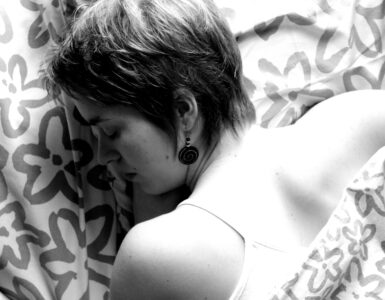For those who suffer from migraines, this is an interesting time. If you experience migraines, you’ve likely spent a lot of money on “miracle” remedies. Supplements, sprays, and herbal teas claim to provide “immediate relief.” Yet, many of these products are little more than wishes, fervent hopes, and the placebo effect. Emerging, promising therapy approaches give hope for improved migraine prevention and symptom management.
The symptoms of a migraine, a neurological condition that is more than just a headache, include nausea, vertigo, exhaustion, and heightened sensitivity to sound, light, and scents.
By staying away from recognized triggers, such as particular foods and additives, you may be able to lessen migraine symptoms. Yoga and other activities like drinking plenty of water could also be beneficial.
Avoid Certain Foods
Diet is a key factor in avoiding migraine attacks. Some numerous foods and drinks might cause migraines, including:
Foods high in nitrates, such as hot dogs, deli meats, bacon, sausage, chocolate, cheese, alcoholic beverages, and particularly red wine. Extremely cold foods, like ice cream or iced beverages, can also affect migraines.
For some, cultured dairy products can cause migraines, like, yogurt, buttermilk, and sour cream.
Some people may get relief from migraine discomfort by a small amount of caffeine. Some medicines for migraines also contain caffeine. However, consuming too much caffeine may result in a migraine. Keep a daily food log to identify the foods and beverages that cause migraine attacks. Keep a food journal and note how you feel after each meal.
Consider Acupuncture
With acupuncture, very small needles are injected into specific points on your skin to promote relief from a wide range of medical ailments.
Compared to sham acupuncture and standard therapy, manual acupuncture sessions were more successful at avoiding migraines in patients with a history of episodic migraine without aura. In a procedure known as sham acupuncture, the needles are not put as deeply.
There is some evidence from research to suggest that acupuncture may lessen headache symptoms.
Add Magnesium And Vitamin B2 – Migraine Prevention, Treatment And Natural Remedies
According to the American Migraine Foundation, supplementing your diet with 400–500 milligrams of magnesium daily will help you avoid migraines. Aura, a sort of sensory disturbance and light and noise sensitivity, may be prevented by the supplement.
If you are pregnant or intend to get pregnant, consult your doctor before using anything new.
Short research discovered that 400 milligrams of vitamin B2 daily reduced migraine frequency and intensity with little adverse effects.
Peppermint Oil
As part of aromatherapy, essential oils are frequently inhaled or used topically on the skin.
There isn’t much proof that applying peppermint oil to the skin will relieve tension headaches. Menthol, recognized for its numbing and cooling properties, is a component of peppermint oil.
Some people apply peppermint oil to their forehead and/or temples for pain relief during a migraine.
Lemongrass Oil
Another natural treatment for migraine pain is lavender oil. One study discovered that 15 minutes of lavender oil inhalation during a migraine attack was beneficial. You can add a few drops to boiling water and inhale the steam to test this therapy. A diffuser for aromatherapy is another option.
Because it can improve mood, enhance energy, and rebalance neurotransmitter levels to stop depressive episodes, lemongrass is an energizing essential oil for headaches and migraines. Apply topically applied lemongrass oil on the neck, shoulders, and temples. Always perform a patch test to check whether it affects you negatively.
Butterbur – Migraine Prevention, Treatment And Natural Remedies
The American Headache Society and the American Academy of Neurology once recommended butterbur as a successful home treatment for preventing migraines. However, both organizations decided to withdraw this advice due to substantial adverse effects. If you choose to try it, consult your doctor first and ensure you purchase a standardized product from a reputable vendor.
Feverfew
There is conflicting research on the effectiveness of feverfew (Tanacetum parthenium) in preventing migraines. This can be because different feverfew preparations vary from one another. However, one study found that taking MIG-99, a more stable version of feverfew extract, helped participants experience fewer migraines.
Feverfew should not be used if you are pregnant since it may result in miscarriage or preterm labor. Additionally, you can potentially be allergic to feverfew if you have ragweed allergies or other plants in the daisy family.
CBD Oil
One of the active ingredients found in the cannabis plant is CBD. Tetrahydrocannabinol’s psychotropic properties are not shared by CBD (THC).
Although CBD oil is frequently used to treat headaches, migraines haven’t been adequately researched yet. This does not imply that it is not advantageous. It indicates that dose, effectiveness, and safety have not been determined.
CBD side effects may be severe. You should first speak with your doctor to determine whether CBD is appropriate for you, like with other herbal extracts. Since the FDA does not regulate herbal supplements, you’ll also want to make sure that you’re purchasing CBD from a reputable supplier.
Migraine Glasses – Migraine Prevention, Treatment And Natural Remedies
Fluorescent and blue lighting can heighten light sensitivity and exacerbate migraines. Migraine sufferers frequently have increased sensitivity to light. Therefore, it seems that wearing glasses blocking these light wavelengths may reduce migraine symptoms. These particular glasses have an FL-41 tint (FL stands for fluorescent), which blocks out particular blue and green light wavelengths.
Avoid Light
It is advised to unwind in a quiet, dark space because migraines make people more sensitive to light and sound. If you can, attempt to sleep.
The term “photophobia,” synonymous with “photosensitivity,” denotes an abnormal and severe sensitivity to light and is a typical migraine symptom. Although everyone is somewhat sensitive to light, those who have photophobia are hypersensitive; strong fluorescent lights, fluctuations in light intensity, and even just natural light can make a migraine worse. Bright light is a common migraine trigger, and some persons with migraine find relief during attacks by relocating to a dark or dimly lit location.



